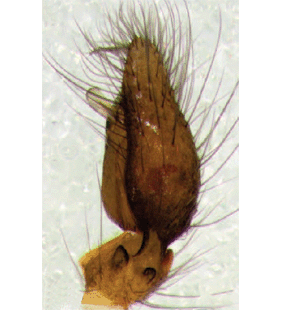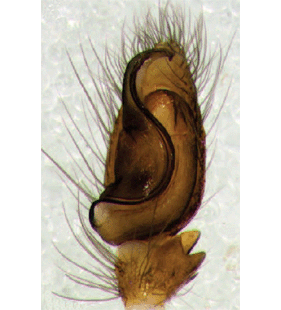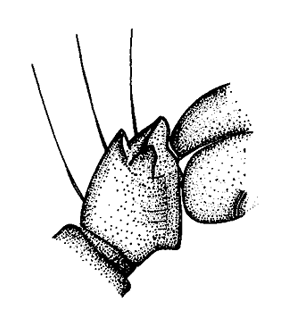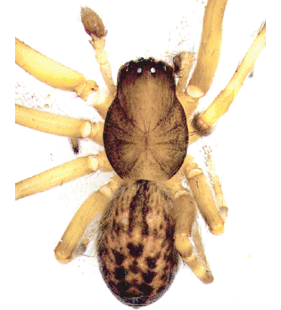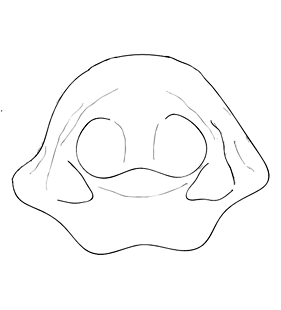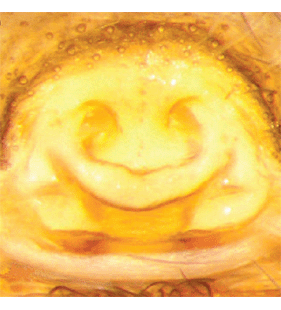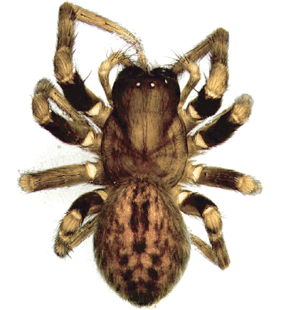Badumna longinqua (L. Koch, 1867)
Beschreibung
Männchen
Embolus lang und S-förmig.
Vordere Mittelaugen ca. 1.4x größer als vordere Seitenaugen.
Weibchen
Epigyne mit ungeteilter Grube und 2 lateralen Zähnchen
Körperlänge Weibchen: 15.0 mmZusätzliche Informationen
In Deutschland eingeschleppt, in Gewächshäusern, in England auch im Freiland.
Diese Art stammt aus Australien und ist daher nicht-einheimisch für Europa. Sie wurde mindestens einmal nach Europa eingeschleppt und konnte sich etablieren.
Verbreitung
Abbildungen
Verbreitungsnachweise
"No reference" bedeutet nicht, dass die Art in diesem Land nicht vorkommt, sondern dass wir die Referenz hierfür noch nicht eingefügt haben. Wir arbeiten daran.
Literatur
Gallon R (2023) Badumna longinqua (L. Koch, 1867) an Australian spider established outside in Britain. Newsletter of the British Arachnological Society 158, SRS News 107: 3-5 ![]()
Haddad C R, Foord S H (2021) Future climate may limit the spread of the Australian house spider Badumna longinqua (Araneae: Desidae) in South Africa. Journal of Arachnology 49: 332-339 ![]()
Kielhorn K-H, Rödel I (2011) Badumna longinqua nach Europa eingeschleppt (Araneae: Desidae). Arachnologische Mitteilungen 42: 1-4 ![]()
Lehtinen P T (1967) Classification of the cribellate spiders and some allied families, with notes on the evolution of the suborder Araneomorpha. Annales Zoologici Fennici 4: 199-468 ![]()
Ubick D, Paquin P, Cushing P E, Roth V (eds.) (2005) Spiders of North America: an identification manual. American Arachnol Soc Keene (New Hampshire), 377 p
WSC (2025) World Spider Catalog. Version 26. Natural History Museum Bern, online at http://wsc.nmbe.ch (28.2.2025) doi: 10.24436/2 ![]()
Updates
| 10-12-2023 | Distribution update | Detail |
| 10-12-2023 | Datasheet update | Detail |
| 10-12-2023 | Distribution insert | Detail |
| 21-10-2023 | Image insert | |
| 23-08-2022 | Datasheet update | Detail |
| 19-03-2020 | Distribution update | Detail |
| 26-02-2015 | Distribution update | Detail |
| 11-06-2013 | Datasheet update | Detail |
| 11-06-2013 | Image insert | |
| 11-06-2013 | Distribution update | Detail |

